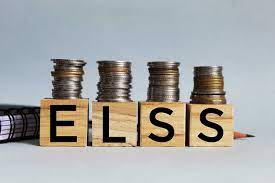Equity Linked Savings Schemes (ELSS) are tax-saving mutual funds that let you invest in equities while giving you tax benefits. What sets ELSS apart is the three-year lock-in period, meaning you can’t withdraw your money for three full years after each investment. The lock-in period often makes investors wonder if it hurts or helps long-term returns.
If you’ve ever felt unsure about investing in ELSS funds just because your money gets “locked up,” this guide will clear things up for you so you can make better investment decisions.
What are ELSS Funds?
ELSS stands for Equity Linked Savings Scheme, a mutual fund that mainly invests in shares of companies listed in the stock market. These funds are special because they allow you to save tax under Section 80C of the Income Tax Act, so you get tax benefits while your money grows.
ELSS funds come with a lock-in period of three years, which is the shortest among all tax-saving options covered by Section 80C, like PPF or NSC. During this time, you can’t withdraw your money, but after the lock-in ends, you’re free to redeem your investment with no restrictions.
When you invest in ELSS, at least 80% of your money goes into stocks and equity-linked instruments. That means these funds have the potential for higher returns than traditional fixed-income options, but the returns also depend on how the market performs. You can invest either as a lump sum or through regular Systematic Investment Plans (SIPs), and the gains on these funds after three years are taxed as long-term capital gains (LTCG).
What Does Lock-In Mean for You?
Lock-in simply means your investment is inaccessible for three years from the day you invest, whether via a lump sum or SIP. Each SIP instalment has its own three-year countdown, so your Jan 2025 SIP can be redeemed only in Jan 2028, and so on.
Compared to other Section 80C options, ELSS has the shortest lock-in period: ULIPs have a five-year lock-in, and PPF has a fifteen-year lock-in. This short lock-in ensures you aren’t stuck for too long, letting you plan flexibly around your goals. However, other mutual funds, like the best hybrid funds or other equity categories, do not have any lock-ins.
Benefits You Get Because of Lock-In
The lock-in period is actually designed to benefit young investors. Investors are forced to ride out short-term turbulence and give their money a genuine chance to grow. Over the years, this habit of “staying put” often leads to better compounding, the magic that grows your investment faster.
- Disciplined Investing: You stick to your plan, which leads to stronger wealth-building.
- Reduced Portfolio Churn: Since you’re not trading in and out, there are fewer transactional costs.
- Lower Expenses: Less trading often means a lower expense ratio for the fund.
What Happens After Three Years?
After your three-year period, you’re totally free to redeem your investment. You can withdraw, hold, or switch to another fund. There’s no penalty for staying invested longer, and if equity markets do well, you stand to gain more.
Tax Impact: Lock-In and Returns
Because your gains in ELSS are considered long-term capital gains (LTCG), only profits over ₹1.25 lakh are taxed at 12.50%. This means you pay little tax when you finally withdraw your investment.
Here are a few tips before you start investing in ELSS funds:
- Don’t rush to withdraw just because the lock-in ends. Consider your financial goals.
- Use the lock-in to build saving discipline and grow wealth, especially if you’re a first-time investor.
- Review fund performance and expense ratio before investing. Choose a well-managed fund with a good track record.
Conclusion
The three-year lock-in period in ELSS funds isn’t a roadblock; it’s really a boost for your investment. It protects you from panic and gives your money a better chance to grow.
Don’t worry about your money being locked in; think of it as giving your investment the space it needs to multiply.


